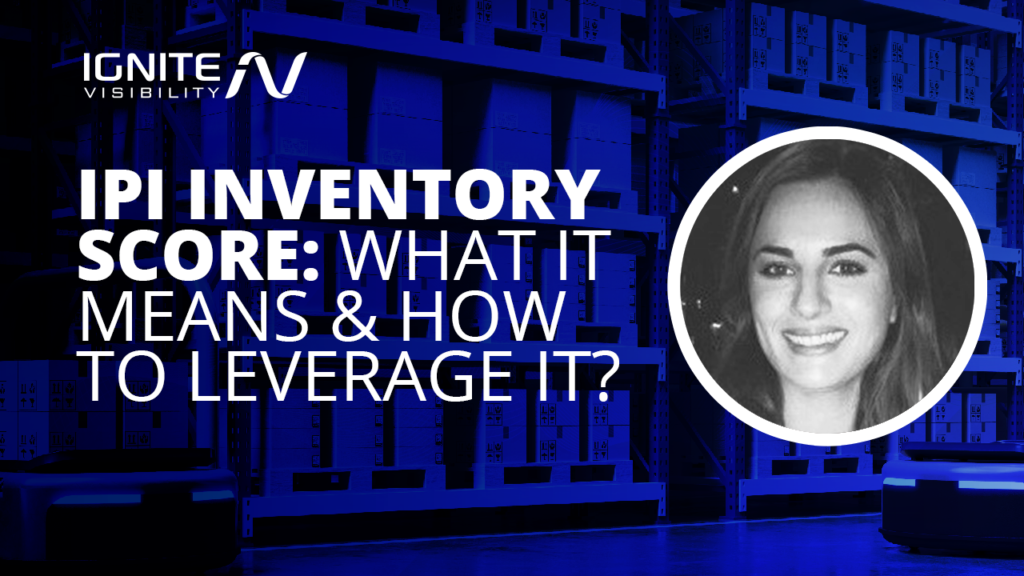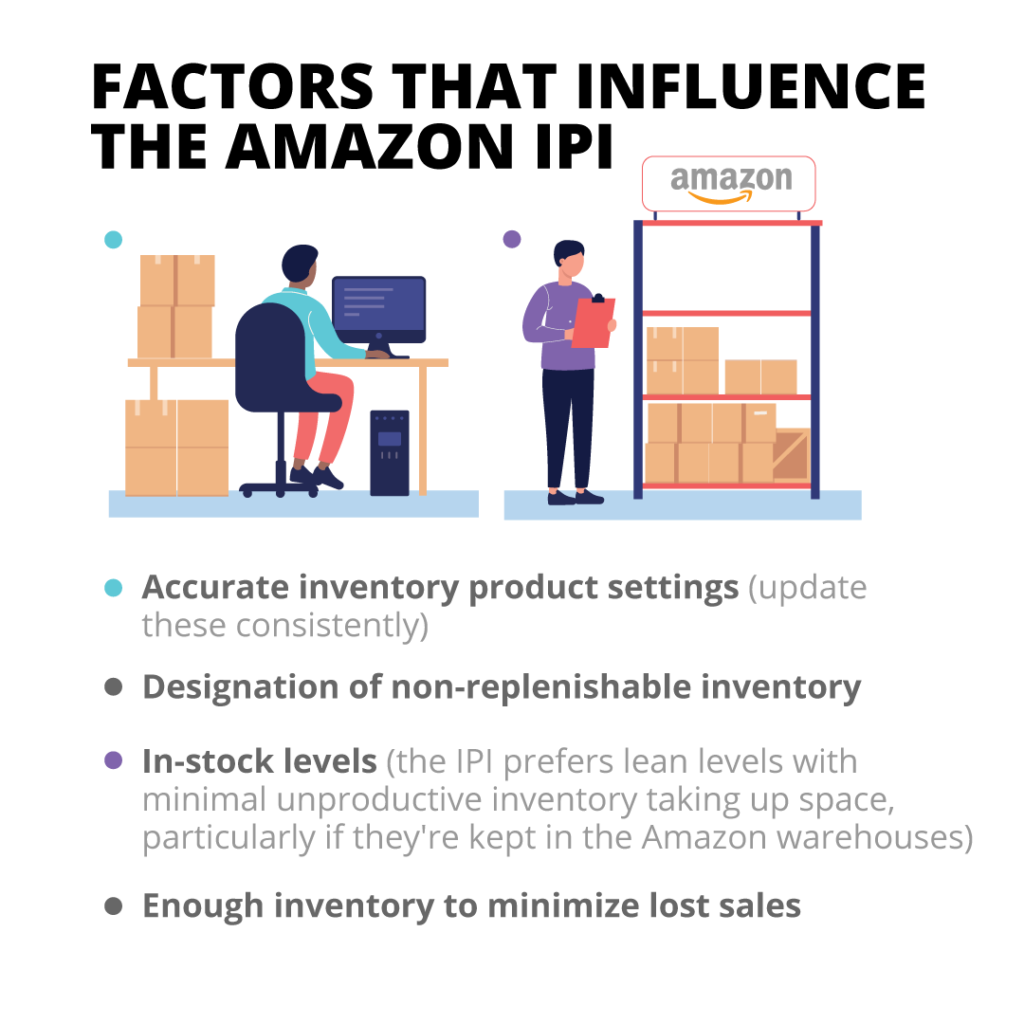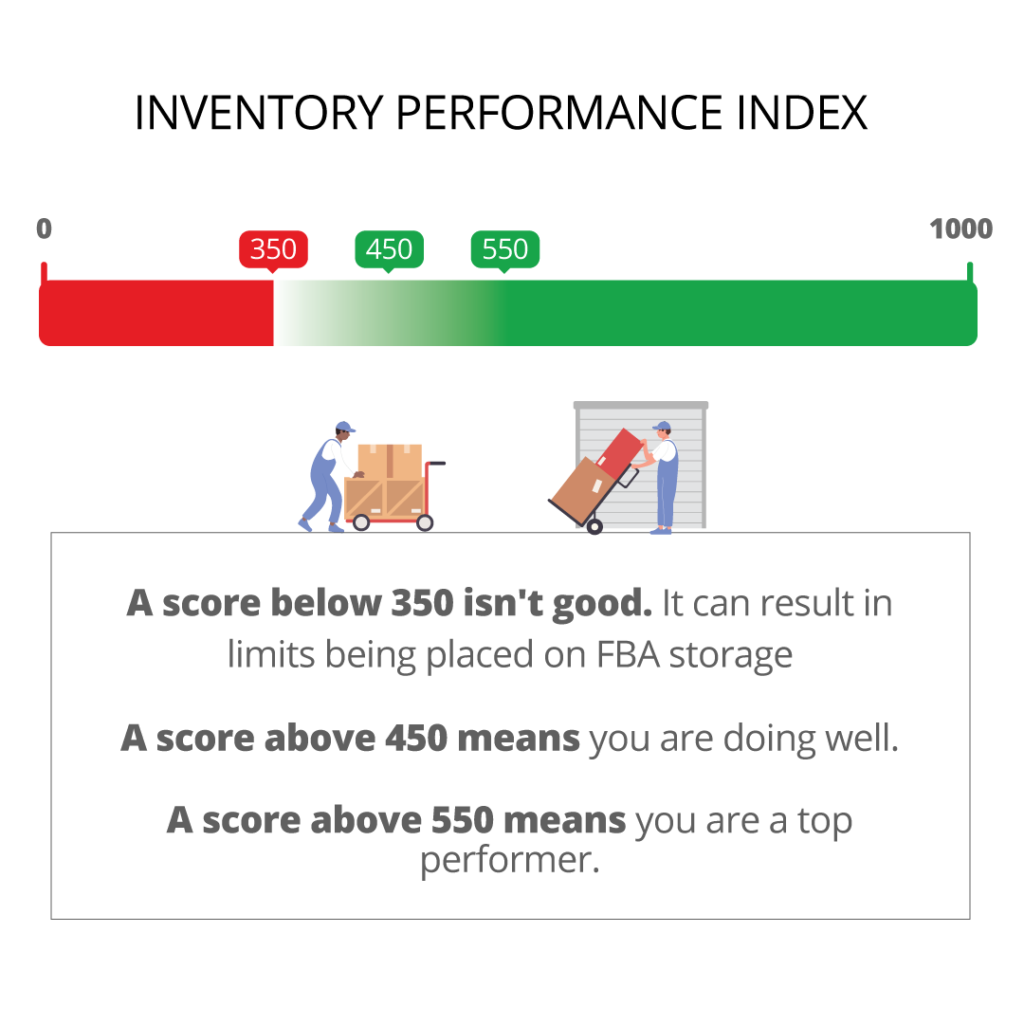I have a lot of fun in my role as Sr. Amazon Strategist with Ignite Visibility. It gives me the chance to learn what it takes for brands of every size to grow in a highly competitive ecommerce landscape. The Amazon IPI is part of that.
You’re not alone if you’re wondering, “What is IPI scoring from Amazon?”
Fortunately, I’ve got you covered on the details, including factors that influence your score and tips for improving.

IPI Inventory Score: What it Means and How to Leverage It
What is IPI?
IPI stands for Inventory Performance Index.
According to Amazon seller central, the IPI “measures inventory management over time, including how well you balance inventory levels and sales, fix listing problems that make your inventory unavailable for purchase, and keep popular products in stock.”
For Amazon, it’s a way to determine your reliability as a seller and your potential for sustainable success. Basically, this is Amazon’s way of measuring your inventory performance, which is crucial in the world of delivery.
Why the Amazon IPI Is Important
This is an important new metric that allows sellers to check and understand how Amazon is viewing their account from an inventory standpoint. It’s like getting a slice of perspective from the man behind the curtain (in this case, a lively algorithm).
But it’s not just how the elusive Amazon sees things. It’s how your customers see things. This is Amazon’s way of helping sellers improve their inventory performance to increase sales and volume on the platform.
The IPI can also help you keep your Fulfillment by Amazon (FBA) storage fees down. Sometimes this is referred to as Long-term storage fees (LTSFs). You could also see a dip in these fees, which are no fun for any seller.
Factors That Influence the Amazon IPI
This index is based on how well you keep your best-selling items in stock, so you can imagine there are specific factors at play having to do with that.
Amazon looks at some specific factors. Knowing these influencing factors is a great way to help you achieve good inventory levels, even when your sales are down.

Factors That Influence Amazon IPI
All of this gives you a rating, which translates into your IPI score. But knowing your score is one thing. Understanding your score is another.
Decoding Your IPI Score: What Does It Mean?

Amazon Inventory Performance Index
Amazon deduces the IPI score of 0–1,000 by using four key metrics:
- Excess inventory percentage: If your percentage of excess inventory is too high, it might be time to run promotions or remove old products. Here, a higher percentage corresponds with a lower IPI score. More excess inventory means more FBA fees, which means more lost FBA revenue.
- FBA sell-through rate: Here, a higher rate corresponds with a higher Amazon IPI The same is true for the reverse. You want more sell-through to keep inventory slim and toned. Some weeks, your sell-through rate could be lower because you’re gearing up for a projected boost in sales. If the sales come, your score will balance itself out.
- Stranded inventory percentage: If you’re paying storage fees for inventory that has no shot at being sold, you’re going to get a dent in your IPI score thanks to the stranded inventory percentage. Here, a higher percentage corresponds with a lower IPI score.
- FBA in-stock rate: This refers to your level of replenishable SKUs that you keep in stock. While a low rate won’t necessarily lower your IPI, you could lose out on sales—which prevents you from increasing your score. Here’s an example of an FBA in-stock rate calculation:

Example of Calculating the FBA In-Stock Rate
The FBA in-stock rate comes from an equation involving the stats you see here.
Now for the good stuff. According to Amazon IPI:

Amazon Inventory Performance Index Scores
But it’s not just the numerical score you should look at. The IPI dashboard in Amazon Seller Central also shows you which products may need to be restocked, so be sure to pay attention to that.
The Minimum IPI Threshold
FBA is a program available to most sellers. You can keep your inventory in their warehouses and they’ll “pick, pack and ship” your orders as they come. This typically results in increased efficiency, higher search ratings, and increased revenue for sellers, so you can imagine it’s a comfy place to be.
Getting below the minimum IPI threshold of 500 will prevent you from being able to use FBA services fully for your Amazon listings. This could cause serious issues with your revenue, so it’s best to avoid a low score.
Prior to the early days of the pandemic, the minimum threshold was a score of 350. However, Amazon bumped up the minimum to 450 after they had to prioritize shipments due to mega-demand on in-home products. This is also around the time they eliminated limits on in-stock quantity due to sheer unpredictability.
Then Amazon increased the IPI score again, which brought sellers up to the 500 mark if they wanted unlimited storage. The competition is just getting stiffer, it seems.
This happens if your IPI score falls below the minimum threshold on two separate dates during the prior quarter.
If you receive a sub-350 score at least six weeks before the end of any given quarter, Amazon will send you a notification that your storage may be limited. Any limitations on your storage will incur throughout the subsequent quarter.
In the second half of 2020, Amazon changed things up with the IPI score. They moved evaluation check-ins ahead by one month and gave sellers a longer period of time to make up their score before enforcing limitations. However, the stock limit period of enforcement also expanded.
Now, seasonal sellers are seeing more emphasis on long-term performance while others will see short-term changes on a weekly basis.
Tips for Improving Your IPI Score
Obviously, the ideal IPI position is as a top performer. If you’re not there, but you want to be, follow me…
To improve your score, you can :

Tips for Improving Your IPI Score
Keep in mind that your IPI score is made up of sales, inventory levels, and costs that occurred over the last three months.
It’s updated on a weekly basis, so your score could change or go through some hiccups. If one week your score is lower than the week before, it’s because the data used in the creation of your metric has changed a bit.
The IPI score for a lot of Amazon sellers took a dip after the holiday season. This makes sense considering the reduced demand after the seasonal rush. Good inventory levels are easier to keep up with when your sales are higher (like they often are in Q4), and changing gears as demand shifts can prove tricky.
If you work at your inventory performance daily, you’ll definitely see improvement in your score over time.
AVOID THIS SHORTCUT: Some sellers might try to mark a SKU as non-replenishable by hiding it on the Seller Central Restock Inventory page. They might think this would eliminate a product from being considered for the FBA in-stock rate. This isn’t a good idea because it won’t change your score and it could cause you to lose a valuable chance to restock a product. Plus, once you hide a SKU, you won’t see restock recommendations for it anymore.
Bottom Line on the IPI
At the end of the day, what is IPI if not a way for Amazon to hold their sellers accountable? They have 2.3 million active sellers (with 15.9% of new sellers coming from the US-based Amazon).
All of this information points straight toward a heap of competition. Paying attention to your IPI score, knowing what it means, and ultimately, taking the steps to improve it points you in the direction of ecommerce growth.